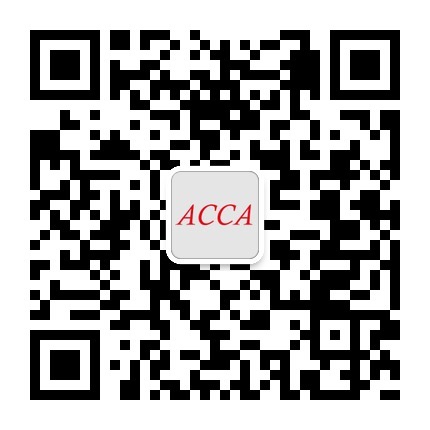| ACCA网络课程 | 课程专业名称 | 讲师 | 试听 |
 85%的人正在学习该课程 85%的人正在学习该课程 | ACCA 全维度网课体验课程 实景课堂与独立录制 覆盖所有知识点,根据学习计划推进学习进度 | 高顿名师 |  |
 70%的人正在学习该课程 70%的人正在学习该课程 | ACCA网课全科卡(8.2折) 为零基础刚开始学习ACCA的学员特别定制 | 高顿名师 |  |

| ACCA网络课程 | 课程专业名称 | 讲师 | 试听 |
 85%的人正在学习该课程 85%的人正在学习该课程 | ACCA 全维度网课体验课程 实景课堂与独立录制 覆盖所有知识点,根据学习计划推进学习进度 | 高顿名师 |  |
 70%的人正在学习该课程 70%的人正在学习该课程 | ACCA网课全科卡(8.2折) 为零基础刚开始学习ACCA的学员特别定制 | 高顿名师 |  |

1、凡本网站注明“来源高顿教育”或“来源高顿网校”或“来源高顿”,的所有作品,均为本网站合法拥有版权的作品,未经本网站授权,任何媒体、网站、个人不得转载、链接、转帖或以其他方式使用。
2、经本网站合法授权的,应在授权范围内使用,且使用时必须注明“来源高顿网校”或“来源高顿”,并不得对作品中出现的“高顿”字样进行删减、替换等。违反上述声明者,本网站将依法追究其法律责任。
3、本网站的部分资料转载自互联网,均尽力标明作者和出处。本网站转载的目的在于传递更多信息,并不意味着赞同其观点或证实其描述,本网站不对其真实性负责。
4、如您认为本网站刊载作品涉及版权等问题,请与本网站联系(邮箱fawu@gaodun.com,电话:021-31587497),本网站核实确认后会尽快予以处理。
ACCAP阶段报名费是多少?一文介绍全了!关于证书考试的费用一直是同学们比较关注的问题,特别是ACCA这类各科报名费用都有差异的考试,学姐为大家整理...
2023-11-28ACCAP阶段有哪些科目?各科目详细介绍!ACCA考试科目分为不同的阶段,很多同学在报名的时候都比较想知道考试科目的具体区分,学姐就带来了详细的介绍...
2023-03-14acca考试分为F阶段和P阶段,考生通过F阶段的9门科目之后就可以开始报考P阶段的科目了,P阶段的科目考试难度比F阶段的难度上升了一个层次,很多考生会...
2023-03-10ACCAP阶段有考试顺序吗?有哪些要注意的?ACCA考试是分为两个不同阶段的,基础F阶段共9门科目,专业P阶段共6门科目,有同学知道考试需要按照阶段顺序来...
2023-03-08ACCA考试科目:《ATX高级税务》重点详解!作为在P阶段科目中涉及较多计算的考试科目,很多同学面对ATX可以说是束手无策,学姐就从多个角度来为大家介...
2023-03-06ACCA考试科目:《AFM高级财务管理》重点详解!作为ACCA考试的第十二门科目,很多同学在选修时都会选择它,对于这门科目还不了解的同学赶快看这里,学...
2023-03-06ACCA考试科目:《APM高级业绩管理》重点详解!APM作为ACCA考试P阶段的选修科目,有部分同学在选择选修科目的时候就选择了它,那么学姐就来为大家详细介...
2023-03-06ACCAp阶段有效期是多久?需要几年内考完?ACCA考试科目数量比较多,很多同学在报考的时候不知道这些科目的有效期规定,学姐就来为大家介绍一下,想了...
2023-03-01ACCAP阶段选修选哪两门?各科难度对比来了!在选择选修科目的时候,同学们要先了解各个科目考试的具体内容,看看是否有自己比较熟悉的知识点,学姐...
2023-02-282023年ACCA的sbl怎么学?点击查收备考攻略!部分同学结束了F阶段的考试,也即将踏入P阶段的考试,在选择第一门的ACCA的P阶段考试时,可能都比较迷茫,学...
2023-02-2463题E选项为何不选啊!持有公司发行股份5%前五名股东单位任职人员不能担任,10%已经大于5%不是应该能担任吗?如果不能担任,范围是多少
资本公积的计算过程不理解
B为什么不对呢
老师:可以分别和我说一下: 1.非货币性资产交换:双方的入账价值和差额怎么确认吗 2.债务重组的:双方入账价值和差额分别怎么确认 3.长期股权投资:初始投资成本,初始入账价值 这几个概念经常弄晕
77题C选项不是应该1%,为什么C正确
63题E选项为何不选啊!持有公司发行股份5%前五名股东单位任职人员不能担任,10%已经大于5%不是应该能担任吗?如果不能担任,范围是多少
资本公积的计算过程不理解
B为什么不对呢
老师:可以分别和我说一下: 1.非货币性资产交换:双方的入账价值和差额怎么确认吗 2.债务重组的:双方入账价值和差额分别怎么确认 3.长期股权投资:初始投资成本,初始入账价值 这几个概念经常弄晕
77题C选项不是应该1%,为什么C正确
各位ACCA小主们,任何的考前tips都仅供参考哦,不能完全依赖这些tips哦! Section A: Question 1 Consolidated statement of financial position including goodwill calculation and step acquisition accounting (IAS 27, IAS 28, IFRS 3 IFRS 10) Section B: Question 2 and Question 3 - Employee benefits (IAS 19) - Government grant (IAS 20) - Financial Instruments: Presentation (IAS 32) .........
2015-11-23高顿网校小编为大家带来了BPP版本的ACCA P6 Exam Tips: The exam will comprise two compulsory questions within Section A which will both be of a case study style. The first question will be 35 marks in length and will contain four marks for professional skills. The second will be for 25 marks in total and will contain no professional skills marks. One of these questions will focus on per.........
2015-09-062015年6月的ACCA P5科目通过率为什么只有28%?高顿网校小编在看了考官报告之后,发现考官对此表示很生气! The majority of candidates attempted their allocation of three questions there was little evidence of poor time management in terms of completing the paper. Amongst the section B questions, Q3 was probably marginally most favored in the number of candidates a.........
2015-08-27高顿网校小编为各位ACCA学员整理了P1科目复习指导,希望大家查漏补缺,对考试有所帮助。 Composition and structure of board 1Composition a. Chairman: Heading the board of directors and running the board. b. Executive directors: Directors who responsible for the administration of a business. c. Non-executive directors: Directors who do not hold any executive or manage.........
2015-08-06高顿网校小编为各位ACCA学员整理了P1科目复习指导,希望大家查漏补缺,对考试有所帮助。 The board of directors 1.1Roles and responsibilities 1The role of the board Higgs Report/Combined code a. The board is collectively responsible for promoting the success of the company by directing and supervising the companys affairs. b. The boards role is to provide entrepreneu.........
2015-08-06ACCA专业阶段考试难度,已经参与了ACCA考试的同学会知道,考试科目是分为两个阶段的,分别是基础F阶段和专业P阶段,F阶段的科目的难度比较低,基本通过率都在40%以上,有部分科目能达到80%,但P阶段的难度会提高一些,具体有多难呢?来看看学姐怎么说吧! 一、ACCA专业阶段考试难度 ACCA专业阶段科目.........
2023-01-12ACCAp阶段报考顺序推荐,先报哪个好?通过ACCAF阶段的考试之后,很多同学对于P阶段科目的报考顺序开始发愁,要知道P阶段的难度会有提升,而且科目也都是不能免考的,赶快来看看学姐怎么分析吧! 一、ACCAp阶段报考顺序 首先我们先了解一下P阶段的各个科目,其中必考两门为《SBL战略商业领袖》、《.........
2022-12-15参加过acca考试的小伙伴应该都知道,acca的考试总共分为f阶段和p阶段,其难度也是随着考试的进程而升高的。有小伙伴就想知道:ACCAp阶段一次最多考几门?p阶段成绩有效期是多久?现在就一起来了解一下吧! 一、ACCAp阶段一次最多考几门 ACCAp阶段一次最多考四门。每年也最多报考八门。只有P阶段的考试.........
2022-08-24ACCA考试一共有两个阶段,分别是F阶段和P阶段,其考试难度也是逐渐增大的。因此就有小伙伴有疑问了:ACCA的p阶段需要备考多久才够?考试难度怎么样?那么学姐现在就给大家进行一个解答,希望可以帮助到大家哦。 一、ACCA的p阶段需要备考多久才够? ACCA P阶段备考时间没有办法给一个可以量化的,因为.........
2022-08-18相信很多对ACCA比较了解的小伙伴都知道,ACCA的考试分为F阶段和P阶段,随着考试的顺序,考试难度也是逐渐增大的,许多小伙伴比较担心ACCAp阶段的的考试内容,比如ACCAp阶段考试需要考几门?考试时间是哪天?那么现在就跟着学姐一起来了解一下吧! 一、ACCAp阶段考试需要考几门? ACCAp阶段考试需要考六.........
2022-08-15了解ACCA的小伙伴应该都知道,ACCA考试分为F阶段和P阶段,每个阶段里都有一包含的二科目,那么ACCA考试P阶段考几门?P阶段成绩有效期是多久?如果你也不知道这两个问题的答案,那就跟着学姐一起来了解一下~ 一、ACCA考试P阶段考几门 ACCA考试P阶段要考六门。这六门科目分别是:SBL(战略商业领袖)、.........
2022-08-12想必大家在考试之前一定丢听说了ACCAP阶段的考试很难吧,ACCAP阶段科目难度真的很高吗?P阶段是机考吗?既然大家都比较感兴趣,那么学姐今天就给大家解答一下,一起往下看吧! 一、ACCAP阶段科目难度高吗 P阶段内容是F阶段的升级版,例如P4,是F9科目的升级版,同样是讲投资,融资,风险管理,而且考.........
2022-08-10接触过ACCA考试的人都知道ACCA的所有考试科目中,考试的难度是随着ACCA考试进程而升高的。ACCA最后四门也就是P阶段的科目,那么我们今天就来说说,ACCA最后四门难考吗?通过率怎么样?一起来了解一下吧~ 一、ACCA最后四门难考吗? ACCA的后四门课程为P阶段的科目,后四门课程为选修课和4门选修课。这使.........
2022-07-19了解ACCA考试的考试的小伙伴应该都知道ACCA考试采用的是全英文考试试卷,很多英文比较薄弱的小伙伴可能看到这个消息就心生胆怯了,那么对于大家都比较害怕的这个一点,学姐今天就来给大家说一说,ACCA英语不好怎么办?怎么提高英语?希望学姐的解答可以帮助到大家! 一、ACCA英语不好怎么办? 英语.........
2022-07-14ACCA的考试每年都会举行四次,所以大家参加考试的机会还是蛮多的。但是还有一些小白考生对acc机考的报名时间还不太了解,那么学姐今天就来说一说ACCA机考报名时间是什么时候?怎么报考?一起来了解一下吧~ 一、ACCA机考报名时间是什么时候? ACCA F1-F4随时机考,当场知成绩,随报随考,费用固定。考.........
2022-07-14